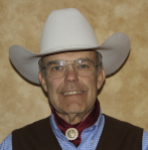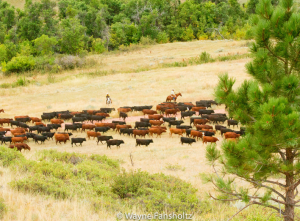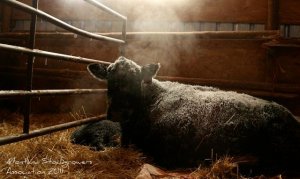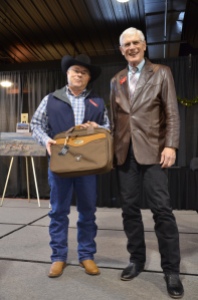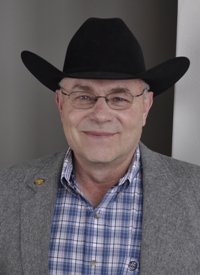Montana Rancher Feature – Jed Evjene of Two Dot
This week’s Montana Rancher Feature highlights Jed Evjene from Two Dot. Jed and his wife, Annie, manage the American Fork Ranch, which was recognized this year for their work in environmental stewardship, conservation and sustainability. The Evjenes raise Angus/Hereford cross cattle on their ranch. Learn more about the Environmental Stewardship Award Program. Connect with the American Fork Ranch on Facebook.
Be sure to leave Jed any questions in the comments section below and check out other posts in our Montana Rancher Feature series. Know a member of the Montana ranching community who should be featured in a future post? Use this online form to send us the information!
 How is your family involved in the Montana ranching community? My wife is also ranching. My youngest son operates a ranch in South Dakota. My middle son works as a ranch hand during the summer on a ranch east of Big Timber.
How is your family involved in the Montana ranching community? My wife is also ranching. My youngest son operates a ranch in South Dakota. My middle son works as a ranch hand during the summer on a ranch east of Big Timber.
I conserve water or work to ensure good water quality on my ranch by… Work very hard to ensure good water quality on the ranch by placing stock water tanks in upland places, lessening the impact within riparian areas with a controlled grazing plan in conjunction with placement of stock tanks.
My favorite cut of beef is… Rib eye steak
My role model (or superhero) is… Is my wife. She is the hardest working and the most honest person I know.
When I’m not ranching, I like to… Announce rodeos and tour other ranching operations
My favorite thing about being a part of the Montana ranching community is… Knowing we are helping feed the world and protecting the land while doing it.
I’m working to protect the environment on my ranch by… Management of livestock, land, water and people.
I’m working to prevent erosion on my ranch by… Making sure the native range grasses are healthy and better tillage practice.
I think we need more young people involved in ranching because… To continue to supply the world with the safest food products, continue to protect the land, water and environment.
I’m working to create healthy soil on my ranch by… Keeping good cover and lessening soil erosion as much as possible.
One way I utilize technology on the ranch is by… Record keeping with computers.
Proper handling and welfare of livestock is important to me because… Is the upmost importance! They are the means of harvesting our number one crop and that is our grass, which in return they provide us with a protein supply that feeds the world.
I work to provide for wildlife habitat on my ranch by… Increasing wildlife habitat and providing clean water, feed and shelter.
I always knew I would be in the ranching business. I chose the agricultural life because… I knew from a very young age that this is what I was meant to do.
I work to ensure we raise a safe and affordable beef product by… Practicing the best possible methods of animal husbandry we can with our livestock. Also by getting out there and telling our story.
What would you like beef customers to know about your role in the ranching community? That we care for our land, water, livestock and people more than any other business in the world.















